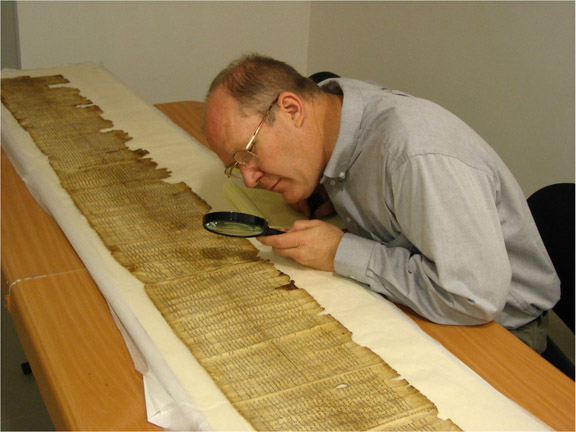
The Israel Museum welcomes you to the Dead Sea Scrolls Digital Project, allowing users to examine and explore these most ancient manuscripts from Second Temple times at a level of detail never before possible. Developed in partnership with Google, the new website gives users access to searchable, fast-loading, high-resolution images of the scrolls, as well as short explanatory videos and background information on the texts and their history. The Dead Sea Scrolls, which include the oldest known biblical manuscripts in existence, offer critical insight into Jewish society in the Land of Israel during the Second Temple Period, the time of the birth of Christianity and Rabbinic Judaism. Five complete scrolls from the Israel Museum have been digitized for the project at this stage and are now accessible online.
"We are privileged to house in the Israel Museum's Shrine of the Book the best preserved and most complete Dead Sea Scrolls ever discovered," said James S. Snyder, Anne and Jerome Fisher Director of the Israel Museum. "They are of paramount importance among the touchstones of monotheistic world heritage, and they represent unique highlights of our Museum's encyclopedic holdings. Now, through our partnership with Google, we are able to bring these treasures to the broadest possible public."
The five Dead Sea Scrolls that have been digitized thus far include the Great Isaiah Scroll, the Community Rule Scroll, the Commentary on Habakkuk Scroll, the Temple Scroll, and the War Scroll, with search queries on Google.com sending users directly to the online scrolls. All five scrolls can be magnified so that users may examine texts in exacting detail. Details invisible to the naked eye are made visible through ultra-high resolution digital photography by photographer Ardon Bar-Hama– at 1,200 mega pixels each, these images are almost two hundred times higher in resolution than those produced by a standard camera. Each picture utilized UV-protected flash tubes with an exposure of 1/4000th of a second to minimize damage to the fragile manuscripts. In addition, the Great Isaiah Scroll may be searched by column, chapter, and verse, and is accompanied by an English translation tool and by an option for users to submit translations of verses in their own languages.
No comments:
Post a Comment